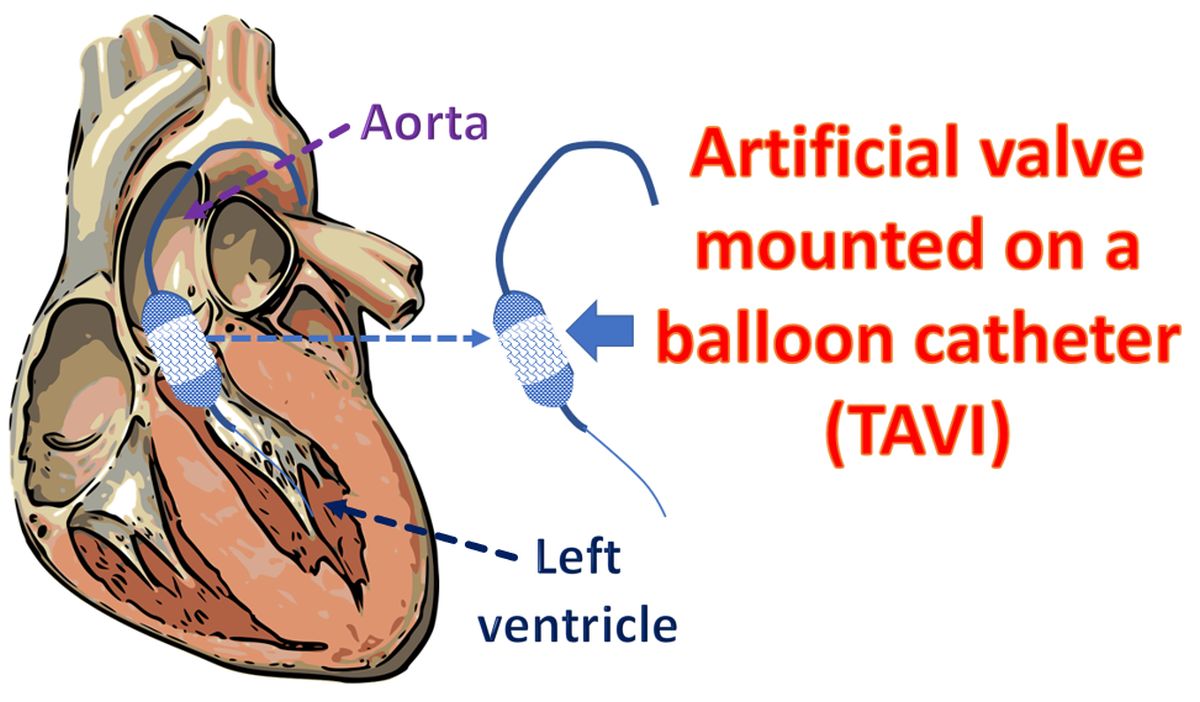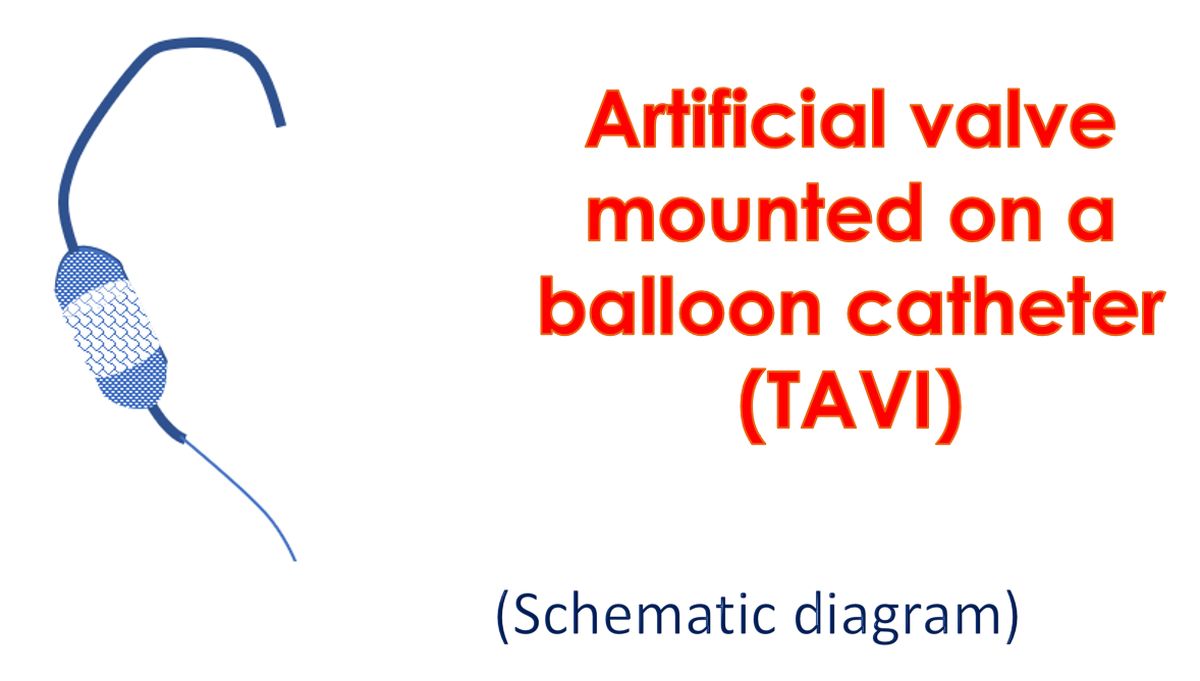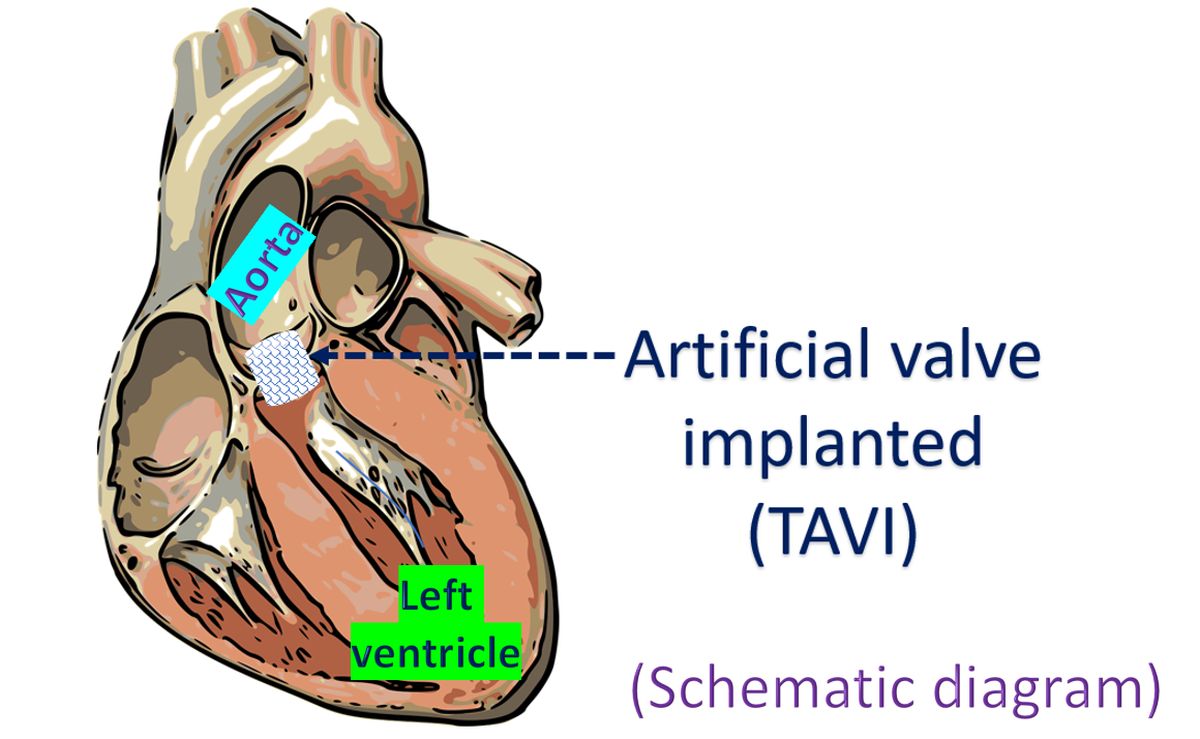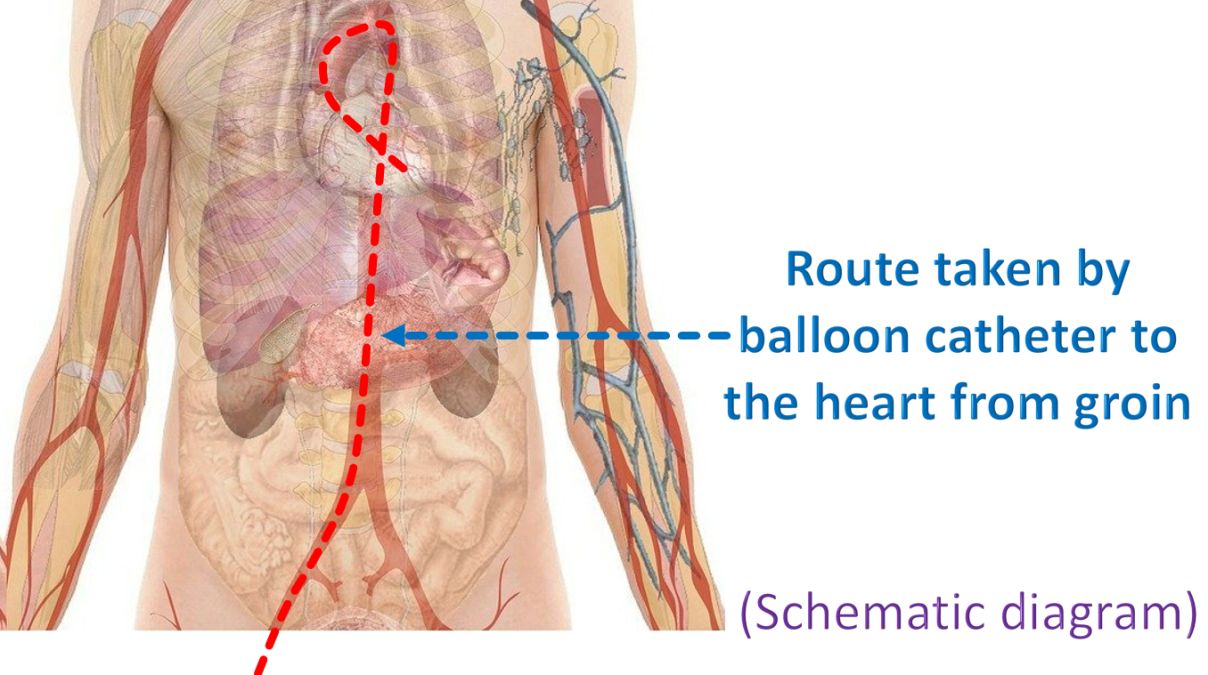What is TAVI? Cardiology Basics
What is TAVI? Cardiology Basics
TAVI is short form for transcatheter aortic valve implantation. It is also called TAVR (transcatheter aortic valve replacement). Surgical aortic valve replacement (SAVR) was the only option in symptomatic severe aortic stenosis earlier. Now we have the option of implanting a valve without surgery, using artificial valves mounted on balloon catheters. Approaches to TAVI can be transapical, through the left ventricular apex, transfemoral, through the femoral artery or transcarotid, through the carotid artery.

When TAVI was initially introduced, it was done only for those at very high risk for surgery. But as the procedure was perfected and the features of the device improved with better technology, it is now being recommended for those with aortic stenosis and low risk for surgery as well. As of now the valve used for TAVI is quite expensive but the cost will gradually come down as the number of procedures being done worldwide increases.

In the more commonly used approach for TAVI, an artificial valve mounted on balloon catheter is introduced through the femoral artery. It is guided up to the aortic valve through the aorta under fluoroscopy. Once the position of the artificial valve across the aortic valve is confirmed, the balloon is inflated using a syringe like mechanism attached to the other end of the device. The balloon catheter is withdrawn once the valve has been successfully implanted.

As the procedure is done for severe native aortic valve stenosis or a previous surgically implanted valve, initial balloon dilatation is done in preparation for TAVI. After the TAVI procedure, femoral access site can be closed with vascular closure devices to prevent back bleed and hematoma formation. This is because of a larger access with a bulky device, compared to the usual diagnostic catheters and guide catheters for coronary interventions. Transapical access is usually done with a mini thoracotomy, still avoiding the midline sternotomy needed for surgical aortic valve replacement. Transcarotid access is also picking up in those who have no femoral access. Still another way is to create transfemoral access by doing an intravascular lithotripsy for diseased and calcified femoral arteries in this elderly population.

In general, surgical replacement of the aortic valve is preferred in those below 65 years while TAVI is the choice for those above 80 years. For those between 65 years and 80 years, both options can be contemplated, weighing the risks and benefits in each case, taking into consideration the person’s preference as well.

